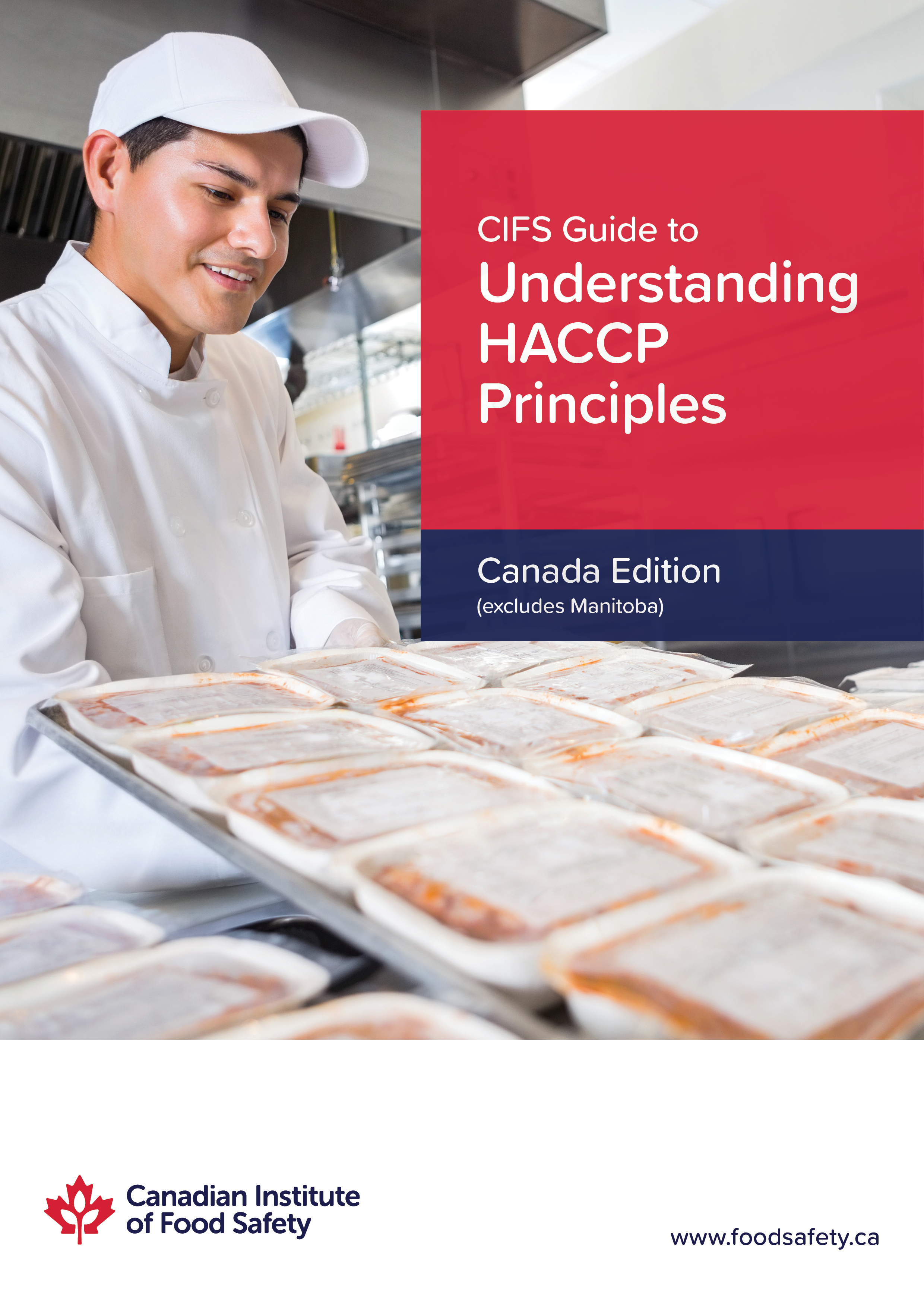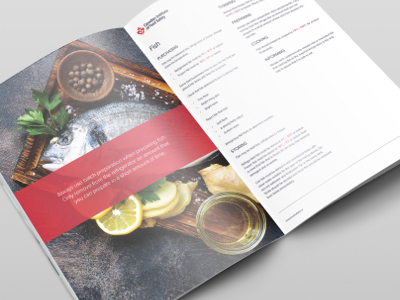
This guide will help you to ensure consumer safety by applying the 7 principles of HACCP (Hazard Analysis Critical Control Points). HACCP was designed to prevent, eliminate and reduce food hazards and is used worldwide as a means of controlling food safety across many types of food businesses. HACCP can be implemented in Food Safety Plans around the world and throughout every stage of the food supply chain — including production, preparation, packaging and distribution.
In This Resource
Introduction
Hazard Analysis and Critical Control Points (HACCP) is a food safety and risk assessment plan that was initially developed in the 1960s by NASA and a group of food safety specialists. HACCP principles are an international standard and are implemented in Food Safety Programs all around the world. HACCP can be applied to processes throughout every stage of the food supply chain, including production, preparation, packaging and distribution.
As a food safety initiative, HACCP is a systematic and preventative system. It helps a food business find, prevent and correct physical, chemical and biological hazards that could occur throughout the process of producing, transporting, storing, cooking and serving food.
HACCP principles are important for businesses involved in all areas of the food industry; they help to maintain the best food safety practices. As each food business is different, each will have different food safety processes and procedures. However, no matter what the business or its procedures, HACCP principles can be applied.
Understanding HACCP Principles
HACCP outlines seven key principles to ensure the safety of food. They are:
- Conduct a Hazard Analysis
- Identify Critical Control Points
- Establish Critical Limits
- Monitor Critical Control Points
- Establish Corrective Actions
- Establish Record Keeping
- Establish Verification Procedures
Principle One: Conduct a Hazard Analysis
A hazard analysis is an initial process of identifying potential hazards that could occur in a food business. Once the hazards have been identified, controls to prevent, eliminate or manage them must then be designed and applied. A food safety hazard which needs to be identified and controlled is anything that causes food to become harmful or unsafe for human consumption. Food safety hazards are categorized as physical, biological or chemical hazards.
| PHYSICAL CONTAMINATION | happens when objects contaminate food. Sometimes when food is physically contaminated, it can also be biologically contaminated. The physical contamination might harbour dangerous bacteria — for example, a dirty fingernail falling into food. |
| BIOLOGICAL CONTAMINATION | happens when bacteria or toxins contaminate food. Biological contamination is a common cause of food poisoning and food spoilage — for example, raw poultry harbouring salmonella. |
| CHEMICAL CONTAMINATION | occurs when food comes into contact with toxins that can lead to chemical food poisoning — for example, cleaning and sanitizing chemicals not rinsed off plates properly. |
Principle Two: Identify the Critical Control Points
A Critical Control Point is a point in the food preparation process where hazards can be reduced, eliminated or prevented. It is the point at which something is measured or checked.
Identifying Critical Control Points (CCPs) will help to reduce the risk of food-borne illness by preventing the growth of harmful bacteria, as well as prevent cross-contamination between foods, which can trigger serious allergic reactions for some customers.
Examples of Critical Control Points are:
- signing off on a food delivery
- checking the holding temperature of food
- cooking food to a specific temperature
Principle Three: Establish Critical Limits
A Critical Limit marks the acceptable or unacceptable level of a hazard. All food businesses are required to follow Critical Limit guidelines set out by government regulators.
A Critical Limit is applied at each of the Critical Control Points. Common examples of Critical Limits are temperature and time, for example:
- ground poultry must be cooked to at least 74°C/ 165°F for two minutes or longer
- buffet items on display must be discarded after two hours
- food must be displayed or served at 60°C/140°F or above
Critical Limits must be measurable or answered by responding with either “yes” or “no”.
Principle Four: Monitor Critical Control Points
The monitoring of each Critical Control Point is essential to make sure that hazards don’t go beyond the Critical Limits set. Monitoring can be broken down into four different categories: observation, sensory, chemical and physical. Common examples of monitoring Critical Control Points are:
- checking cleaning schedules and monitoring delivery checklists
- tasting, smelling or visually inspecting food for signs of contamination or spoilage
- checking the acidity, nutritional analysis or residue analysis of products
- checking temperature, time, pressure or weight of products
In many cases, food safety legislation states that all potential hazards must be continually monitored to ensure they do not exceed their Critical Limits.
Principle Five: Establish Corrective Action
Corrective action must be taken if a hazard exceeds its Critical Limits. Rules must be established that outline the corrective steps that must be taken if a hazard does exceed its limits. Corrective actions are either immediate or preventative.
An immediate corrective action is stopping a breach that is happening right now, for example:
- disposing of contaminated food
- rejecting a food delivery with signs of pest infestation
A preventative corrective action is stopping a breach from occurring in the future, for example:
- performing routine maintenance on equipment
- changing cleaning procedures
These actions are put in place to ensure that no harm comes to a human as a result of the hazard exceeding its Critical Limit. For example, any food which remains in the Temperature Danger Zone for more than two hours must be discarded. In this instance, discarding the food is considered a corrective action.
Principle Six: Establish Record Keeping
HACCP principles state that comprehensive, up-to-date records must be kept. Depending on your business, these records are kept together in a live-document called a Food Safety Plan. Some examples of records that your business might need to keep could be:
- temperature charts and logs
- storage logs
- cleaning schedules
- employee qualifications
- pest control logs
It is common for a food business to present the above records to a Health Inspector during an inspection. In some municipalities, it may be required by law.
Principle Seven: Establish Verification Procedures
Verification procedures — such as an annual audit — can help you to determine if your HACCP Plan actually works to prevent the hazards identified.
Verification of the HACCP Plan should focus on ensuring that the implementation of the plan complies with the written plan.
Ultimately, a Health Inspector will be the best judge of how effective you have been in implementing HACCP principles into your operations, but developing a detailed (yet easy-to-understand) HACCP Plan is the first step to managing the risk of food-borne illness and other food safety emergencies in your business.
Getting Started with HACCP
The Canadian Institute of Food Safety has created the CIFS HACCP Food Safety Plan Kit to help food businesses build and implement a compliant Food Safety Plan.
The CIFS HACCP Food Safety Plan Kit covers all the steps and principles of the HACCP food safety system along with step-by-step instructions for completing a Food Safety Plan. The kit includes HACCP plan templates, a step-bystep instructional guide and video training lessons. Food businesses also receive posters and signage for their establishments and a certificate of completion.
Food businesses can also learn more about HACCP principles and creating a Food Safety Plan through the CIFS Food Handler Certification Course.
HACCP principles are designed to ensure the safety of humans by preventing as many food hazards as possible. If this plan is implemented correctly, injury or illness can be avoided.




